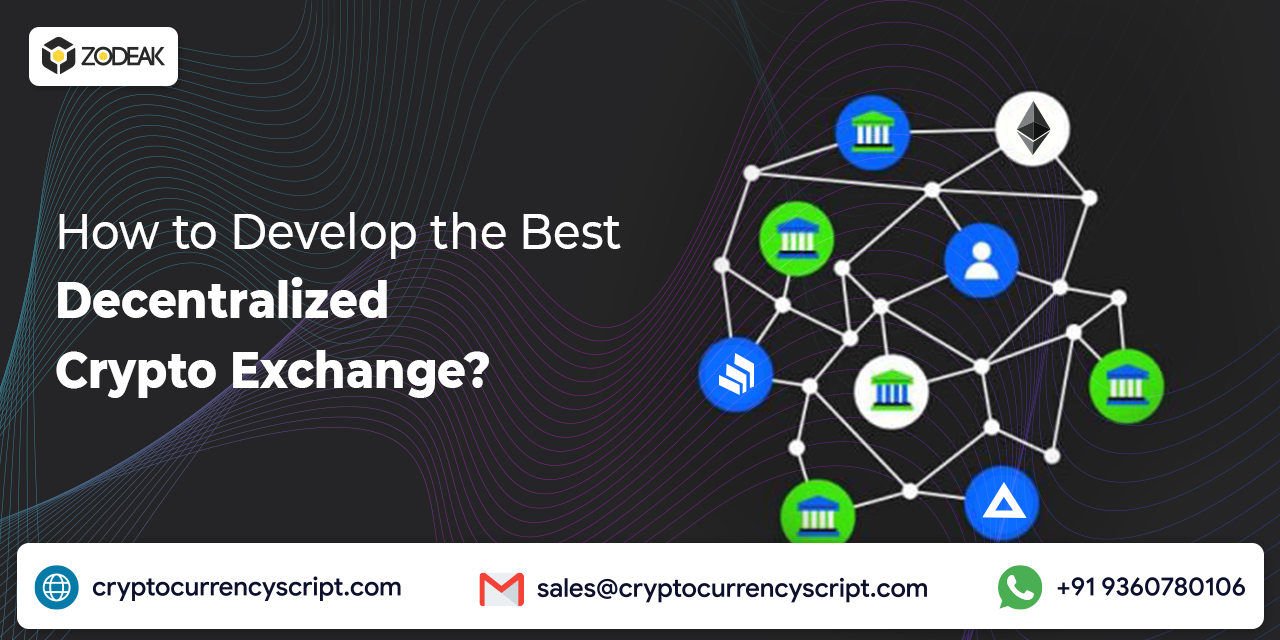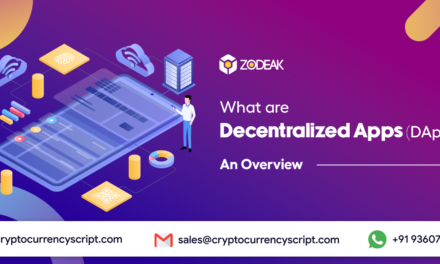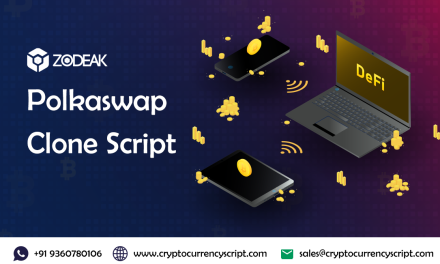Hello Readers! To create the best decentralized crypto exchange software, it is crucial to have a clear roadmap and a well-designed plan. You may have come across the term SDLC if you’ve worked on a project before or interacted with project managers.
The software development life cycle (SDLC) is a step-by-step process that must be followed to create high-quality DEX software. All the stages of the SDLC, including requirement gathering, design, implementation, testing, and deployment, are equally important.
Besides, skipping any of these stages can render all the software development efforts useless. These processes are similar across DeFi development companies. However, the order and sequence of events may vary depending on the chosen methodology, team size, and business value proposition.
This guide will provide an in-depth understanding of each process to help you develop a successful decentralized crypto exchange software.
Step 1: Requirements Gathering and Planning
To start decentralized crypto exchange development, it is crucial to begin with a thorough analysis of the requirements and well-crafted plan. To achieve this, a collaborative effort between project managers and partners is essential. This aims to gain a deep understanding of your business model and the specific project requirements for the DEX software.
Some of the critical questions that should be addressed during this process include:
- Who will use the decentralized crypto exchange platform?
- What are the target users for the decentralized crypto exchange platform?
- What functionalities and features should the decentralized crypto exchange have?
- What are the regulatory requirements that the platform must comply with?
- What is the underlying technology stack that will be used to build the platform?
- What is the timeline for the development, testing, and deployment of the decentralized crypto exchange software?
- What outcomes are expected from the decentralized crypto exchange?
Answering these and other relevant questions in your planning phase will set a clear vision for your developing best decentralized crypto exchange. And also expectations for your DEX project and ensuring its success.
Step 2: Design and Prototyping
In this phase, the focus shifts towards creating a functional, unique, and user-friendly platform in a decentralized context. The design considerations include various aspects such as the exchange’s functionality, workflow, and user experience.
To achieve this, prototypes are created to visualize the interactions and user interfaces. This allows for prompt feedback and improvements based on user insights. When designing a decentralized crypto exchange sofware, there are several key steps to consider:
Blockchain Selection
When it comes to building your DEX, you have a variety of blockchain options to choose from.
Among the most popular are TRON, Binance Chain, and Ethereum, all of which are public blockchains for decentralized crypto exchange development. However, other public blockchains could be suitable alternatives depending on your specific needs and preferences.
Ultimately, the choice of blockchain will depend on factors such as performance, security, user base, and community support.
Smart Contract Design
Once you’ve decided on the public blockchain, you need to develop the smart contracts for your DEX platform.
In the context of a DEX, smart contracts play a crucial role in facilitating trades between users. The key smart contracts that you need to develop for your DEX include
- The Automated Market Maker contract sets the price of tokens based on the supply and demand in the liquidity pool.
- The token contract defines the characteristics of the tokens that will be traded on the DEX.
- The liquidity pool contract manages the funds users deposit to provide liquidity for trading.
- The governance contract enables users to participate in the decision-making process for the DEX.
Developing these smart contracts is essential to create a secure, efficient, and transparent DEX that can attract users and build trust in the blockchain community.
UI Design
To ensure that your DEX is easy to use for your users, creating a simple and user-friendly interface that they can interact with to trade tokens seamlessly is crucial.
This UI is essentially the window through which your users will interact with your platform, and it needs to be designed to make it easy for them to navigate through your platform.
To create a UI, you can make use of various web development technologies such as HTML, CSS, JavaScript, and more. By using these web development technologies, you can create UI that is not only functional but also visually appealing.
This makes your platform easier for users to navigate your platform and ultimately trade tokens with ease.
Liquidity Pool
One of the key elements in operating a decentralized crypto exchange platform is designing and setting up liquidity pools.
A liquidity pool enables users to deposit their assets into these pools, which in turn facilitates the trading or swapping process. These pools are essentially a collection of funds that are used to provide liquidity for a particular trading pair.
Liquidity providers, who contribute to these pools, are rewarded for their participation in the platform’s ecosystem via yield farming or syrup pool. This reward system incentivizes users to provide liquidity to the pools, which results in a more efficient trading experience.
Therefore, it is crucial for any DEX platform to implement its liquidity pool infrastructure to ensure the long-term success of the platform.
Step 3: Decentralized Crypto Exchange Development
Once the design and prototypes are finalized, the actual development of the decentralized crypto exchange begins.
Developers, proficient in blockchain technologies, work on coding based on the chosen frameworks and programming languages for development.
Tasks are divided based on the chosen development approach, whether in-house or through outsourcing.
Unit and module testing are performed during development to identify and rectify potential errors early on.
Key documents, such as the design document, functional requirement specification, and coding guidelines, are created to guide the development team.
If you’re considering building your DEX platform, there’s another option worth exploring. You can also use a decentralized exchange script to create a DeFi-based platform on the blockchain for exchanging cryptocurrencies. This can be a great way to establish your decentralized crypto exchange and participate in the growing DeFi ecosystem.
Step 4: Quality Assurance & Testing
When finalizing the decentralized crypto exchange software, quality assurance and testing are essential.
Various testing methods, including bug fixing, system testing, and user acceptance testing, are used to ensure the code’s reliability.
Both manual and automated tools are employed to maintain the code’s quality and security.
The iterative testing process entails identifying problems, fixing them, and verifying the corrections to keep the decentralized crypto exchange platform safe and reliable.
This rigorous testing process is crucial in achieving a secure and dependable decentralized crypto exchange platform.
Step 5: Deployment
After the completion of the development and testing phase, the decentralized crypto exchange is ready to be deployed on your chosen blockchain.
This deployment process involves the transfer of the exchange’s smart contract code to a specific blockchain. And allowing it to interact with other contracts and users on that blockchain.
The initial release of the decentralized crypto exchange software is known as the Alpha version. This version is released to a limited user, enabling them to explore the exchange’s features and provide feedback for improvements.
Based on this feedback, developers can identify and address any issues or bugs. And incorporate new features or improvements to the user interface.
Once all necessary updates and improvements have been made, a Beta version of the DEX software is released. It includes all the features and improvements identified during the Alpha phase and is made available to a broader user.
This phase allows for further testing and feedback, leading to the final release of the decentralized crypto exchange software.
Step 6: Maintenance and Updates
The decentralized crypto exchange software development process doesn’t end with the deployment stage.
It requires continuous maintenance and updates since the exchange has to keep up with changes, user needs, and blockchain advancements.
The users may find bugs or request new features, which prompts the need for continuous monitoring, upgrades, and maintenance.
Final Words
To create a successful cryptocurrency platform, it is important to gather user feedback from various sources such as social media, forums, and other popular crypto discussion platforms.
This feedback can help you understand what users expect from your platform and what features they would like to see. By carefully analyzing this feedback and following a strategic plan, you can build a solid foundation for your DEX software.
To make this process even simpler, consider a decentralized exchange script from a reputable provider like Zodeak. This will help you position yourself for long-term success in the hyper-competitive market.





